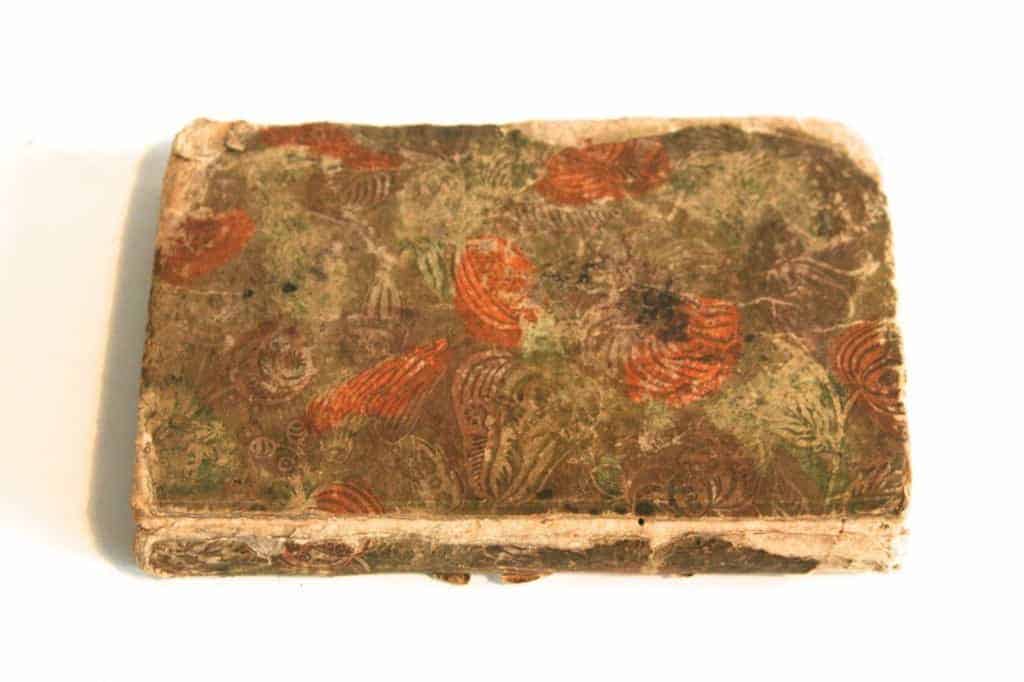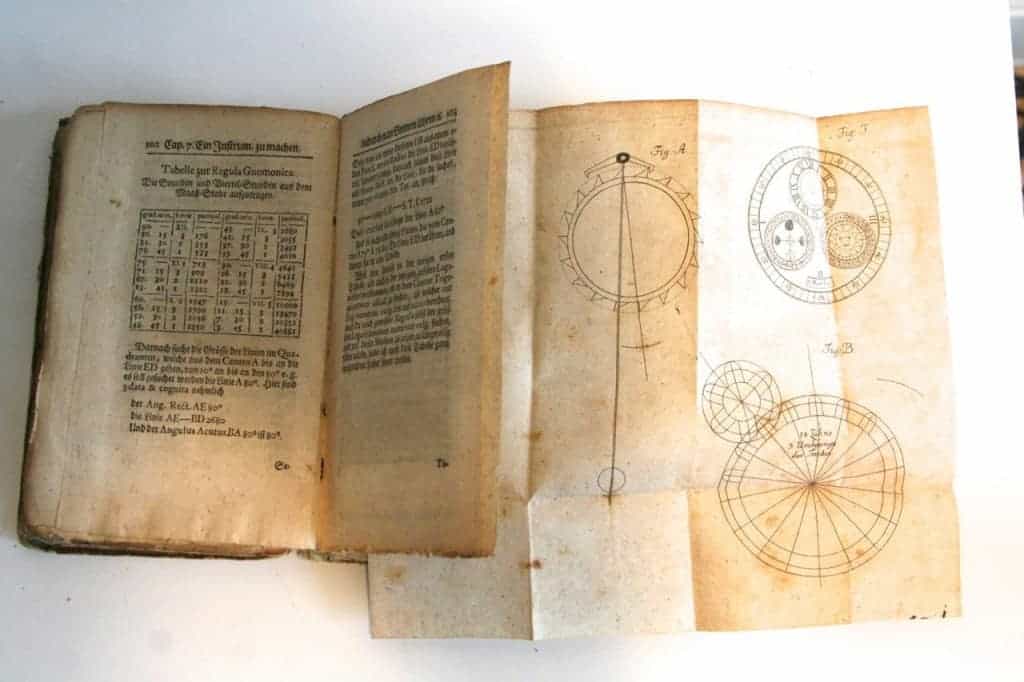May 10, 2020
Aristotle’s Masterpiece – A Rare Early American Edition
I’ll discuss a rare 18th century copy of Aristotle’s Masterpiece – the so-called “Dirty Book” of the early modern period.


May 10, 2020
I’ll discuss a rare 18th century copy of Aristotle’s Masterpiece – the so-called “Dirty Book” of the early modern period.
posted in: You Tube Rare Books Video
March 17, 2020
I’ll discuss and value a rare 1600 French edition of the Hypnerotomachia
Poliphili – one of my favorite books. It was this edition that firmly placed the famous and mysterious Renaissance book within the world of alchemy. If you like graphics arts, secret languages, and mathematical codes, this is a
book for you.
posted in: buying rare books, NYC Rare Book Dealer, RARE BOOK APPRAISAL, Rare Book Dealer, rare book value, You Tube Rare Books Video
February 5, 2020
One of the most common questions I get asked is “How much is my old Bible worth?” The Bible is the greatest bestseller of all time, and you can imagine how many copies have been preserved on account of their importance to families and their descendants. As a result, many English Bibles – even when old – often fetch quite modest sums. They become more expensive as they get back into the 17th century (but still remain relatively affordable). In this video, I will value an unusual 1649 King James Bible – printed in the year of the execution of Charles I – which still retains elements of the older Geneva editions. While it is not possible to make generalizations based on one specific example, I try to give some insights into what makes a particular edition or copy of the Bible more collectible than others.
posted in: NYC Rare Book Dealer, RARE BOOK APPRAISAL, Rare Book Dealer, rare book value, selling rare books, You Tube Rare Books Video
March 18, 2015
Many times I am asked to value a rare book and am forced to gently explain to the owner (who may have seen a complete copy online or at auction at a high price) that an incomplete copy is worth a very small fraction of the value of a complete work. The expectation is often that if a book is just missing a page or two, then the price would be affected somewhat, but still within reason. More often than not, that is not the case however and the price is actually drastically affected. Part of the reason no doubt is that while many collectors buy rare books of interest to them, they do keep an eye as well on their investment potential and future resale value. Buying rare books is one thing and selling rare books is another. It is often very hard to get future buyers to pay thousands of dollars for a book- even a very rare one- that is described in an apologetic tone with words such a “lacking” or “missing” or “wanting” (the preferred marketing euphemism of booksellers).
Nevertheless there are always exceptions to the rule, and sellers and owners are advised to consult a rare book expert even if their work is incomplete.
A couple weeks ago I was offered an incomplete book- a 1563 first edition of Foxe’s Book of Martyrs- or the Actes and Monuments of these Latter and Perillous Days, Touching Matters of the Church. This was one of the most influential books of the 16th century, published early in the reign of Queen Elizabeth I.
Here are a couple photos of the large thick folio- a testament to one of the most complex printings of the period.

It can immediately be seen when opening the book that it lacking the title page- indeed a closer inspection and study reveals that it is actually lacking the title, frontispiece, and last leaf. It is equally true that despite their age most books of the 16th century, if found in a similar state, only fetch modest prices at auction.
This is not the case for Foxe’s Book of Martyrs however. A search of the ABPC auction database as well as the RareBookHub indicate that there have not been any complete copies sold at auction in the last 30 years of records. In fact, as one searches further back in time, it s clear that the popular book was often read to death and complete copies are virtually unheard of in commerce. As far back as 1907, a rare book catalogue found in Google Books offers an imperfect copy for 80 sterling and adds to justify the price that “no absolutely perfect copy is known.” That may be an exaggeration or marketing ploy of an eager turn of the century bookseller, but it nevertheless indicates how rare complete copies are. As such, despite its imperfect state, the book remains both valuable and highly desirable.
In any case, an incomplete work is better than a non-existent copy. The woodcut below, inserted at p. 1548 in Foxe’s Book, shows the fate that befell many books including being burned in a pyre. We have to be thankful that some works survived at all and, like many things in life, learn to forgive and be tolerant of imperfections.

posted in: RARE BOOK APPRAISAL, sell rare books, selling rare books, We buy old books, We buy Rare Books
October 14, 2012
APPRAISING AN 18th CENTURY RARE BOOK ON CLOCKS AND WATCHES
We just received in the mail a very interesting work on watch and clockmaking from 1732: Johann George Leutmann’s Vollständige Nachricht von den Uhren. This is a complicated work and typographically intimidating. It is printed in black-letter script with only occasional Roman script, a style that remained common in Germany until the end of the 18th century. It is not a book, like a signed limited copy of the Little Prince, for example, that can more easily be looked up on the internet for a range of prices. So, I thought it would be instructive, to outline what goes through the mind of a bookseller when appraising a book’s value:
There are several factors one must reasonably consider:
IMPORTANCE: When evaluating an old book, and once it has been identified, it is necessary first to get a sense of its importance. Some books are rare, but not necessarily important and therefore not very valuable. The book here is important. A little research indicates that it is considered to be the “The first detailed treatise on clocks and watches.” (Baillie, Clocks and Watches, p.147). Book dealers are often fond of books that can be labeled “the first of this” of the “first of that”, and while they sometimes go to extremes to elevate a particular book’s importance with such descriptive labels for the purpose of marketing, this is truly a breakthrough work in horology. It is particularly fascinating, as while some other earlier works had touched upon clock mechanisms, Leutmann delves into the relatively newer area of pocket watches and portable time pieces, with a chapter even on how to tell the age of a watch (albeit that is not much use today if you like a glitzy Rolex or a more subdued vintage Patek Phillipe)
THE BINDING: The binding of this book is a scarce and collectible binding. It is a Brocade paper binding that is almost certainly contemporary with the book (i.e. from the 1730s). The paper was originally printed in bright colors, with an abundance of decorative leaves and flowers. It is now worn, and like many things that suffer the ravages of time, only displays a glimpse of its former beauty. Still, it is a quite fascinating as an example of innovative and inexpensive 18th century European bookbinding.
RARITY: The book is not a first edition, as it was originally issued in 1718. Still, it is a work that very rarely appears at auction in any edition. I have only been able, in fact, to trace two copies at auction in the last thirty years. There are several subscription databases to check auction results such as the ABPC, AmericanaExchange, and in the case of German books, the JAHRBUCH der Auktionspreise für Bücher. A quick and free option to ascertain rarity is to look at Worldcat.org. This is a solid, albeit not entirely comprehensive, database of holdings of books in Institutional Libraries (how many libraries have copies of a particular book). Worldcat has its flaws, such as duplicate listings, incorrect listings of actual books vs. microfilmed copies etc. Still, it is very helpful, and certainly one can also get the collation (page count) and cataloger’s notes of many rare books. Through Worldcat, I was able to trace only 9 other copies of this 1732 edition- so it is quite rare.
PROVENANCE: It is essential when evaluating a book, to look for signs of previous ownership, bookplates, annotations, inscriptions etc. and to assess their importance. In this book, we do have some ownership signatures in a fairly illegible hand, but which read “Ex Libris W.W. Eckark” Now, if that was an important and identifiable watch or clockmaker, that would certainly raise the value of the book. Unfortunately, there is scant biographical information on who that is and as such it does not contribute much to the value. Additionally, there are some mid-18th century notes to the inside of the front cover (paste-down) of the book. These notes however just reference and re-state part of the text and do not appear to be significant.
COMPLETENESS: The work should contain 2 parts in 1 volume with 2 engraved frontispieces, 30 engraved plates and 16 tables (mainly folding, or double-page). One must carefully check and count all pages. While all the text pages are present as well as the 2 engraved frontispieces, this copy only possesses 18 of the 46 plates and tables and therefore must be considered severely defective.
VALUE: While the book is extremely important in the history of horology and is bound in an interesting 18th century binding, it is incomplete. It is a unfortunate fact that collectors and dealers want complete books even if that means passing over otherwise interesting and rare works. Condition and completeness are extremely important when it comes to assessing the monetary value of a book. Were this a complete example, it would have a value in the range of $1500-2000. Sadly, with so many plates missing, it is just an antiquarian curiosity to those interested in watchmaking or bookbinding, but something not likely worth more than $300.



posted in: RARE BOOK APPRAISAL